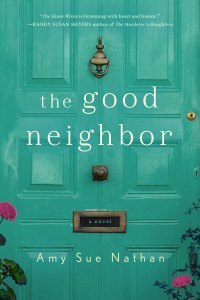Amy Sue Nathan's Blog: Women's Fiction Writers, page 26
March 26, 2015
Praise Moses and Pass The Matzah: A Passover Primer
 The Easter Bunny and his entourage are back at the mall, and that means one thing to me.
The Easter Bunny and his entourage are back at the mall, and that means one thing to me.
Passover is coming.
Passover, the eight day celebration of the Israelites’ exodus from slavery in ancient Egypt, is my favorite Jewish holiday, although I’m not sure why. It entails cleaning and more cleaning and then cleaning some more, and that is my least favorite thing to do. It also involves macaroons, so perhaps that explains it.
In Hebrew, Passover is Pesach — PAY-SACH. The end of the word is that Jewish guttural throat roll that sounds like you are about to hock a loogey. It does not sound like the “k” in Saks or the “ch” in, chosen, as in — people. But I digress.
The first order of business in my household when I’m getting ready for Passover is to plan a Seder (SAY-der). A Seder is the holiday meal that revolves around the retelling of the Passover story through symbol, prayer, song and food. Think Thanksgiving on steroids but without the stuffing. I invite friends who are like family and we sit around the table and squeeze an otherwise four hour long ordeal into a modified fifteen minute yet comprehensive poetic version of the Ten Commandments with Charlton Heston without any love affairs or Technicolor. It goes something like this���they tried to annihilate us, we whipped ‘em, let’s eat.
During the planning process, I am also faced with the quandary of how to best observe the entire holiday, not just the Seder part. While I don’t change dishes or buy all foods that are “Kosher for Passover,” many Jewish families do. But, during the eight days we do not eat bread or anything that has obviously “risen” and in my house that’s basically just bread, cake or anything we deem to be fluffed up. My own internal debate as to whether Oreos without the middle are flat enough to be eaten on Passover is as of yet, unresolved.
To make room for Passover foods in the house and for the holiday, in our heads, we begin by eating all the chametz (it’s the “ch” sound again), or leavened products in the house. Certainly we could sell it all for a dollar, as is customary, to a non-Jew, but eating it is more fun. We then perform the ritual dusting with the feather to ensure that all the chametz crumbs are gone from the house. The problem is, in my cabinets we need a full feather duster. In Passover as in life, every family has their own rules.
With the cabinets cleaned, the shopping ensues. I arrive home from the grocery store with boxes of matzah, matzah meal, matzah farfel, matzah flour, matzah cake mix and a case of macaroons. I store it all on top of our spare refrigerator in the laundry room right in front of the leftover matzah from 2006, 2005 and 2004. Matzah lasts forever.
And while some of that (new) matzah packed in my kids’ lunches might spark comments among their classmates, I always include extra, because it seems to be the hit of the cafeteria every year.
It’s a time when my kids wear their religion on their sleeve, so to speak. They share a bit of Jewish culture at the lunch table where their friends can taste it, for real. That’s the reminder in one full swoop that they’re different and the same, at the very same time. They’re sharing bland and binding crackers, but part of a rich and colorful heritage of which they are both educated, and proud ��� and then they go off math class.
Even when I make light of it, it’s pretty heavy duty.
The fact that my kids know what to expect, and therefore, expect it, is very reassuring. They remind me about everything from making homemade matzah to the Passover mac ‘n cheese to our aversion to gefilte fish to who gets to search for the Afikomen (a hidden piece of matzah) during the Seder to the silly props on the holiday table to a debate on why or why not beans or pasta or rice are eaten on Passover.
So I guess the best part of Passover, aside from the macaroons, is the unfailing recurrence of every part of it every year, making it a week filled with our own family traditions.
And for me, that’s enough, or as we say at the Seder���Dayenu!
(Originally published on Imperfect Parent years ago when��my kids lived at home and I was bit more ambitious with holidays. This year, it’s me, the dogs, and vegetarian matzah ball soup! Also, my new fave���homemade macaroons!)
Amy xo
Have you entered WFW’s 4th blogiversary giveaway for THE LIFE LIST, THE GLASS WIVES, and WHAT I REMEMBER MOST? Click here to find out more!��

March 24, 2015
Win 3 Novels by Women’s Fiction Authors! (Now THAT’S March Madness!)
Let’s celebrate Women’s Fiction Writers 4-year blogiversary with a giveaway, shall we? One winner will receive��THE LIFE LIST by Lori Nelson Spielman, WHAT I REMEMBER MOST by Cathy Lamb, and THE GLASS WIVES by Amy Sue Nathan (that would be moi)!
Check out the Rafflecopter link ��below to enter!
Thank you for��being part of Women’s Fiction Writers!��
Click here to enter:��a Rafflecopter giveaway��for Women’s Fiction Writers!
Amy xo

March 19, 2015
Guest Post: Multi-Published Author Cathy Lamb’s Publishing Advice for Aspiring Authors
Grab a cuppa and settle in. Today, multi-published women’s fiction author, Cathy Lamb, shares her personal publishing story as well as some unconventional advice for aspiring authors.
Cathy Lamb is the author of nine novels. NINE! (And she’s working on number ten! Yay!) She has been one of my favorite authors since the day a friend handed me Henry’s Sisters. I was hooked. I’ve read all of Cathy’s books and recently finished What I Remember Most, a heartwarming��and heartbreaking story of resilience, friendship, and love. I adore Cathy’s characters, they���even with their many flaws and sometimes gut-wrenching backstories���are people I wish I knew. I want to step inside the story and be part of it.
One of the best perks of being an author is making author friends. Cathy and I have become friends through various writer groups. ��I’m thrilled to say she recently read The Glass Wives. Can you imagine? Her work has inspired me and she has read MY book. You can poke around on Facebook and see more about that��here.
But first, read the post, and welcome Cathy Lamb to Women’s Fiction Writers.
And if you haven’t read any of Cathy’s books, why not start today? I recommend her first book, mentioned below, Julia’s Chocolates. I was hooked with the first line: “I left my wedding dress hanging in a tree somewhere in North Dakota.” Aren’t you?
Share your rocky road to publishing in the comments! Or ask a question!
Amy xo
The Rocky Road To Publishing
by Cathy Lamb
Click to view slideshow.
I am asked all the time how one should go about getting traditionally published.
I will assume that you want to know how to do this without losing your mind.
Here is my answer.
You need to write something good.��Really good.����You need to write something that a publishing house believes will sell.
So work, work, work on that story of yours.
Write when you���re crying. Write when you���re daydreaming. Write when you���re hopeless. Write when you���re exhausted and miss your hippie days. ��Write when grief is overwhelming you, write after you kick your husband out, write after a weekend with your sisters where you laughed so hard you wet your pants.
Write when all is well, write when all seems black.
Study writing. Go to writing classes. Study your favorite books and ask yourself why you like them. If you read a dull book, ask yourself, ���Why did this not work for me?��� Make sure you don���t replicate those problems.
Read fiction, non fiction, memoirs, thrillers, biographies, etc. Read all over.
Read��Bird by Bird��by Anne Lamott.��On Writing��by Stephen King.��Writing Out The Storm��by Jessica Morrell. ��And read Julia Cameron and Natalie Goldberg’s books on writing for advice and inspiration.
Study more. Write more. Read more. Begin again. Edit, edit, edit. Use that delete button.
When you’re ready to submit your work, you need to get ��yourself an agent. (Remember, this article is not addressing self publishing or publishing with Amazon. That is a whole other massive and mind numbing article with conflicting opinions.)
Should you finish writing your book before you try to get an agent?
Probably anyone else, in any magazine article or speech about ���how – to – publish,��� here or on Jupiter, will tell you to write a full manuscript before sending the first chapter off to an agent for her review with the hopes that she���ll love it and ask for the full manuscript.
This is enormously good advice in many ways. Writing a full book before sending it to an agent makes you nail down those characters. It forces you into the writing process.
You learn about pacing, character arcs, character development, word choice, descriptions, dialogue, narration, setting, voice, and a hundred other things, including whether or not you are capable of sitting your butt down and finishing a book. All excellent points.
I, however, will not tell you to write a full manuscript before sending the first chapter off to an agent to review.
Why? Because of my own personal and miserable publishing history which involves piles of rejection slips from rejected, full manuscripts.
Let me share my literary misery.
(Skip this part if you can���t stand to listen to people whine. I���ll understand, I will.)
After years spending time writing full manuscripts, as a certain category romance publishing house kept asking for more, they would be rejected. Repeatedly.
I wanted to bash my head through a wall. All those months of work…trashed. For nothing.
Looking back, the writing was bad. The idea was bad. The characters were bad. ��The organization and dialogue and narration were bad. Bad, bad, bad. I’m surprised I got as far as I did.
On my LAST attempt at writing a book, when I��completely��changed genres to women’s fiction from romance, I wrote the first 40 -ish pages of my book, Julia’s Chocolates, no more. I sent it to four agents and a famous editor. The famous editor never responded. All the agents, based on those first forty pages, requested the full manuscript.
I waited until my favorite agent – the one I have now – asked for the full manuscript. I lied and told him I needed to do “a little editing,” and worked my butt off for about four months, writing from ten o’clock at night until two in the morning, while taking care of three young kids, a house, and working a freelance writing job for our state���s newspaper.
I used to edit Julia’s Chocolates while my kids were playing at Chuck E Cheese and McDonalds. I lost a lot of that fake money to the games.
Anyhow, I sent the full manuscript to my favorite agent, blurry eyed and exhausted. He loved it and I signed with him in a couple of weeks. A few weeks after that he sold Julia’s Chocolates ��as part of a two – book deal to the publishing house I’m with now. ��I was ecstatic and I still love both my agent and my editor.
So my advice is to write a bang up 20 pages.��Yes, I did say twenty.
But why write only 20 pages?��Because then you won’t waste your time. If the subject matter/characters of your book are not appealing, if it is not going to sell, you have not wasted a year, or many endless years, of your life writing a book that no publishing house wants. With twenty pages you have limited your loss of time and effort and, unfortunately, tears.
The brutal truth is – and here I will say something that will be offensive so put on your tough alligator skin – what you’re writing may not be anything anyone wants. It could be the topic. Could be the market. Could be the wildly insane competition out there.
It could well be the writing. It’s just not good/intriguing/gripping/fun enough.
So write twenty pages.
When the twenty pages are perfect and wildly wonderful, write a short cover letter to the agents describing the plot in the first two paragraphs, the ending paragraph should be about you, your writing history, etc.
Your packet out to agents, online or by snail mail, looks like this:��Cover letter, one page. Twenty pages of your story. Synopsis, one page.
Send this packet out to ten agents at a time. Yes, I did say ten.
Everything you hear or read, here or on Jupiter, will tell you to send your partial manuscript to one agent at a time.��Don’t follow that rule either. As you can see, I don’t really like rules. Too confining, too dull.
Why submit to multiple agents at the same time? Many agents will never, ever respond to you or your pages. Other agents will take months to read it. With others, the rejection slips will come back so fast, you will think the agent didn’t even read your book. And, he may not have. He may not be taking on clients.
Want more mean truths?�� An agent will read the first paragraph of your work, MAYBE the first page, of your book, before he tosses it if his attention is not grabbed. If he likes the first paragraph, he reads the first page, then the second page, then the third.
He knows QUICKLY if your book is something he can sell to a publishing house. They’re experienced, they’re smart, they’re efficient. Never forget: They are BURIED in manuscripts.
You will probably be surprised at how fast the rejections come back.��It is disheartening, I know it. I lived it. Bang my brain against the keyboard, this part is not fun, and I so feel for you.
But buck up on the rejections or get out of writing. Rejections are a part of being a writer. Even multi published, successful authors still get rejections. Cry. Throw a fit. Take thirty minutes then get over yourself and your pride and your belief that your book should be Number One on the NY Times bestseller list by Tuesday.
If your book keeps getting rejected, analyze it without emotion and figure out what’s wrong with it. You must put your ego aside. Do not give it to your mother or wife to analyze it, they are too close to you and probably won’t be honest.
Hire a reputable editor. (Like Amy) An editor does not like or love you, which is how it should be. You are paying her to be honest and to help you improve. Do not hire an editor if you are afraid your feelings will be hurt. Listen to what she tells you, be open to the criticisms and suggestions.
(Side note: Do not hire an editor��if you want her to flatter you and tell you that your book is perfect. A good editor is blunt and honest and knows her stuff. Most of the time she is polite, but not always. �� Only hire her if you want to hear the truth, you won’t get defensive, you want her criticisms, you’re okay with her shredding your prose, and you are mature enough and smart enough to turn around and use the criticisms to write a better book.)
You may have to eventually change genres, like I did, from romance to women���s fiction, which worked splendidly, and I am now writing my tenth novel. ��I wish I had changed genres years before I did. I would have saved myself a lot of frustration and heartache.�� I would encourage you to do the same after repeated rejections in one genre.
But, lickety split, let���s go back to agent talk.
If an agent likes those twenty pages, he will ask you for the full manuscript.��This is where you write your heart out, like I did, above. ��Make it the best writing of your life. Give up sleep. Get up early, go to bed late, write during the weekend.
You may have to edit that sucker four or ten times. I edit all my books eight times before I send it the first time to my agent and editor, and I have been writing for years.��Address the stuff I mentioned above about compelling characters and believable character arcs, word choice, description, setting and PACING. ��Pacing is key. Too slow and you’ll put people to sleep.
Many people will say that this approach,��where only 20 – ish pages are actually done when you first send it to an agent, ��will result in a rushed, poor manuscript if it’s requested by an agent.
Here’s the key: ��Don’t send in a rushed, poor manuscript. Duh. Send in an excellent manuscript. The very best you can do.
Yes, your manuscript arrives later than the agent wanted but, trust me on this one: If it’s a heckuva manuscript, he won’t give a rip. He’ll lean back in his chair, throw up his arms, look to the ceiling as if in “Hallelujah,” and try to sell your manuscript for as much as he can get.
If you get ONE reputable agent who is interested in your work, you should click your heels together in joy. I have heard unpublished authors fret, ��hands wringing, all uptight, “What would I do if I send my manuscript to more than one agent at a time and they all ��want it?”
This happens so rarely, stop your worrying.
If you are very fortunate and two agents or more ask for the full manuscript, send it to your favorite agent first, wait a month, send an email to see if they’re interested, and if they don’t respond in a timely manner, send the full to the second agent. Or, send it to both agents at the same time, (this is what I would do) and let them know another agent is looking at it, too.
If the agent likes your manuscript and thinks he can sell it, he will call or email ��you.��It is unlikely that he will send a smoke signal.
If you still like that agent after that conversation, you will sign a contract with that agent. ��This means he will represent your book to the publishing houses, which basically means he will contact the editors he knows, either at lunch or a cocktail party or a meeting or a bar, and talk your book up. He will contact editors in houses who sell your type of genre.
Hopefully an editor is interested. If he is, the agent will send the editor your manuscript. If the editor believes his house can sell it and make loads of money off it, he will then buy the book. This involves more contracts. All the contracts are in legalese and are quite long and detailed. They will bore you silly. Get an attorney to review it.
The contracts from the editor/publishing house will go through your agent. You will sign the contracts if you agree to the upfront money the publishing house is offering, and the royalties they offer after the book sells and your upfront money is paid off.
Please people. The number of writers who get upfront six figures – plus is tiny. Miniscule. Do not expect anywhere near this, especially for your first book. ��I know writers who get all the money they can upfront, because they know they will earn no royalties. ��Be aware that the vast majority of people who call themselves writers (probably 97%) cannot make a living writing, that’s why they keep their day jobs.
Remember, you will also give a portion of your earnings to your agent (15%) ��once you are under contract with a publishing house. All monies go from the publishing house, to the agent, then to you. Royalties are paid twice a year.
Once the contract is signed, you’ve sold your book. It is now time to skip and cheer so the aliens on Jupiter can hear you.
There is a WHOLE TON of stuff that you need to do at that time, social media, etc. but that is another article and I do not want to make you cry.
Hopefully there will be more contracts to come and you’ll be on your merry, lovely way. I wish that for you, I truly do.
In the meantime, always remember���.
You must keep writing all the time if you want to publish.
You must keep reading excellent books, and learning from them, if you want to publish.��I am still learning. Still studying. Still critically analyzing my work and doing the same to other authors��� work whose skills I admire.
Don���t you dare ever read crappy books. It will affect your writing.
Understand that this is an incredibly competitive industry. There are so many freakishly talented authors out there it is head spinning. You are competing against them. Never forget it. Bring your best to the table.
You must live a full life if you want to publish.��Love. Laugh. Be with family and friends. Dance. Sing. Go have adventures. For heaven’s sakes, travel. Listen to people. Think new thoughts. Open your brain up to new ideas. ��Read the newspaper. Take an art class. Try photography. Go to the mountains. Play in the waves. Make new friends. Be interested in others. Be interesting yourself. Be compassionate and kind. All this will fuel the writer in you.
Good luck. I mean that.
Cathy Lamb
***** A little more on agents, even though you are probably sick of this topic���
Do you need an agent?�� ��Unless you are writing category romance, like Silhouette or Harlequin, or you’re self – publishing, you need an agent. An agent acts as a screener. If you cannot get an agent to represent you, the general rule is that the publishing house won’t look at your work. In other words, if an agent didn’t like it, they won’t either.
How do you contact an agent in the first place?��If you’re in writers’ groups, agents’ names will start floating around. Pay attention to those names. �� You might also meet agents at writing conferences or workshops. ��Your best friend’s brother’s half sister may be an agent.
Or, pick up this book, 2015 Writer’s Market ��and find an agent in there under your genre. If you’re writing romance, look for romance book agents, writing thrillers, go for agents representing thriller writers
Make sure you are sending your work to good, honest agents. Go to this website��http://pred-ed.com/��to check. Reputable agents��NEVER ask for upfront money or reader’s fees. If yours does, drop him and move on.

March 11, 2015
All About That Book Cover
You might remember the cover story behind The Glass Wives. No? The cover started out with two pink cups. Then we did this. The final cover has one pink cup and one blue/lavender/periwinkle (I was way ahead of the blue/black/gold/white dress curve). It’s one of the favorite stories I tell book clubs and at reader events. It’s that peek behind the publishing curtain that readers (and writers) covet.
So now,��I’ll clue you in to the secret behind the cover for The Good Neighbor.
It started out as a red door.
It looked orange to me on my computer monitor, but everyone told me it was red. And I was thrilled!��I have always wanted��a red front door. It was like the art department at St. Martin’s Press read my book and my mind. While the red door isn’t literal (no red door in The Good Neighbor),��it signaled warmth and welcome. And THAT was literal.
But…
Soon someone notice that another book was being published with a very similar red door. And then another. And because the pub date was originally December, we then were concerned The Good Neighbor would scream HOLIDAY STORY, which it’s not.
Back to the coloring board.
I’ll be honest, I am more a blue gal, than a red gal, but I loved that red door. But I took a deep breath and rearranged my thoughts and climbed on board the teal door train.
And now I can’t imagine it any other way. I’m so grateful to the St. Martin’s team who scoped out those similar covers. They want the cover to stand out, not fade in with other covers on the bookshelves and online. I’m very lucky.
But I’ll be honest, I didn’t always feel that way.
When the change came for the cover of The Glass Wives, at first, I was startled and upset. I assured my editor that Evie Glass would NOT have two different cups (since then, I’m not so sure). I persisted. Evie’s cups would match. I was urged to not be so literal, but to think about what the cups represented���and then I understood. The meaning of the cover went beyond the color of the cups to indicate the two different, yet similar, women inside the story.
It was perfect.
The same thing goes for The Good Neighbor. I based the setting on the street I grew up on in Northeast Philadelphia. Our front door were covered by metal screen doors (with screens in the warm weather, glass in the cold). The front doors were somewhat plain. Some had windows, some did not. I remember white doors and wood doors. I might remember a black door. I definitely don’t remember a teal door��on my street.
This publishing thing is a learning process, and when I saw the cover I pushed aside my instant reaction that the door was wrong.
No matter the color, the door��was right. It matched the tone of the book, the welcoming nature of the characters, and the neighborly sense of story that makes you want to��knock a few times, and then step inside.
At least I hope so.
Amy xo
If you haven’t read The Glass Wives, it’s available in every possible way you’d want to read it. Hardcover, paperback, ebook, large print, audio book on cd or download. Check it out here��or here.

March 4, 2015
Guest Post: Author Rona Simmons Explores How Bad Book Reviews Can Help Writers
 Authors often tell each other: do not read reviews. The reviews that rave about your book go to your head. The reviews that pan your book go straight to your heart. No good comes from either. But author Rona Simmons has another thought. What if we used bad reviews to challenge ourselves? To figure out what works and what doesn’t? What if some of those bad reviews had something valid to say? It’s an interesting thought — and Rona has some great tips and examples below.
Authors often tell each other: do not read reviews. The reviews that rave about your book go to your head. The reviews that pan your book go straight to your heart. No good comes from either. But author Rona Simmons has another thought. What if we used bad reviews to challenge ourselves? To figure out what works and what doesn’t? What if some of those bad reviews had something valid to say? It’s an interesting thought — and Rona has some great tips and examples below.
Please welcome Rona Simmons back to WFW, and share your thoughts in the comments.
Amy xo
Our Love/Hate Relationship With Books
Can understanding what readers “hate” improve your writing?
by Rona Simmons
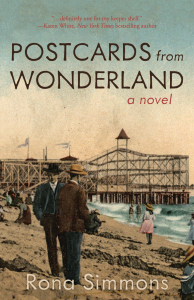 Have you ever wondered what it takes for a book to make a best seller list���whether New York Times, Barnes and Noble, or Amazon?�� I have.�� I thought an understanding of what sets best sellers apart would lead me to the “secret sauce” that captures readers and keeps them reading to the last word.�� But, after perusing several best seller lists, I found myself bleary eyed, empty handed, and still searching for the magic ingredient.
Have you ever wondered what it takes for a book to make a best seller list���whether New York Times, Barnes and Noble, or Amazon?�� I have.�� I thought an understanding of what sets best sellers apart would lead me to the “secret sauce” that captures readers and keeps them reading to the last word.�� But, after perusing several best seller lists, I found myself bleary eyed, empty handed, and still searching for the magic ingredient.
Until that moment, I’d given little thought to the other side of the coin.�� What books do readers dislike and why?�� Why do they lose interest after reading a few pages or even most of the story?�� Why do some develop such strong dislike they rush to post a scathing review and anoint the object of their loathing with a devastating, single star?
Did a list of “books readers hate” even exist?�� It did.�� In fact, contrary to what I thought, finding one was easy.�� But once again the lists alone provided little instruction.�� They included obscure, poorly written works and works forced on readers at an early age.�� Much like the green peas they had to finish before leaving the dinner table, those readers hated them still.
I returned to the list of best sellers, a new approach in mind.
Insights from “one star” ratings
I paged through one of the best seller’s many reviews, tapping at full click speed.�� Past the Amazon.com five-star ratings.�� Past the four star-ratings.�� Then, at the three stars, my cursor hovered.�� I read a handful of “it was okay” entries.�� The samples seemed timid, the readers’ comments too polite or too fearful of expressing an honest opinion.�� I paged down, going deeper and deeper until my PC binged.�� I’d hit bottom.
The number of one-star reviews was surprising.�� The same held true for the next womens fiction title on my list and the one after that.�� Hundreds of one-star ratings and in one or more instances, thousands, sullied each book’s reputation.�� Some, to be sure, were hate mail.�� One writer denigrating another’s work, I asked myself?�� To what gain, I could not imagine.
After compiling, sorting, grouping, and tallying the comments, I found the reasons for low ratings fell into five groups.�� In rough order of the number of mentions, they were:
������������ Characters:�� one dimensional, stereotypical, or wimpy women, protagonists with whom the reader did not identify, or stories with too many characters to follow
������������ Plot:�� unrealistic plots with far too many coincidences, predictable plots, or stories that jumped back and forth in time
������������ Skill:�� poor writing, sloppy editing���editing that failed to catch spelling, grammatical, or punctuation errors, anachronisms, unintended repetition, and factual inaccuracies
������������ Style: ��most often, the offense was dense writing, prose containing too much description or so much description the story became secondary or even irrelevant
������������ Series:�� works failing to meet the standard of earlier works in a series, or works retelling too much from earlier editions
Lessons learned:�� whatever book I love is on someone else’s hate list
The insights were to some extent merely the inverse of what experts suggest produce a good book.�� No surprise there.�� But then, a few titles on the “books we hate” list were books I had read and rated four or five stars.�� That too should not have surprised me.�� Like most things in life, I had learned, there are two sides to the coin or story.
Consider the books you’ve lost interest in or left unfinished or, perhaps, rated poorly.�� What did you find to be the culprit and how can that knowledge improve your writing?
 Rona Simmons’ new novel, Postcards from Wonderland, is the story a young woman who comes face-to-face with a Prohibition era mob boss in a fight to save her husband’s dreams, her marriage, and even her own life.�� The book is due out in March from Deeds Publishing and though she’s waist-deep in promotional activities with the launch, Rona’s already talking about a third novel and looking forward to reading her five star reviews.
Rona Simmons’ new novel, Postcards from Wonderland, is the story a young woman who comes face-to-face with a Prohibition era mob boss in a fight to save her husband’s dreams, her marriage, and even her own life.�� The book is due out in March from Deeds Publishing and though she’s waist-deep in promotional activities with the launch, Rona’s already talking about a third novel and looking forward to reading her five star reviews.
website:��http://www.ronasimmons.com/;
blog:��http://womenatword.wordpress.com;
twitter:��http://twitter.com/rona_simmons
facebook:��http://www.facebook.com/pages/Rona-Simmons-Writer-and-Author

March 1, 2015
Everything You Ever Wanted To Know About Dating
…in book publishing.
Don’t roll your eyes. It’s not THAT kind of blog. But��if you are here looking for a match to keep you busy at night (or in the morning), why not look through some of the��books I’ve featured on WFW since 2011���and take your pick?





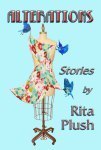
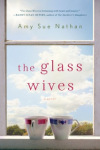

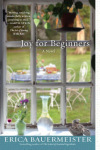
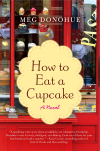

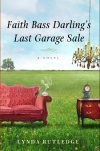
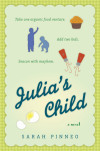
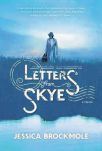

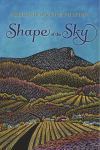
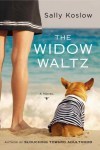

![HUNCHBACKFINALCOVER[1]-2](https://i.gr-assets.com/images/S/compressed.photo.goodreads.com/hostedimages/1425311445i/13875055.jpg)
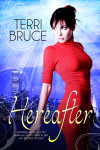


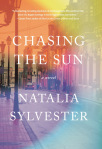

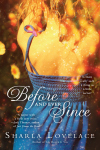
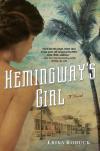

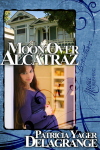

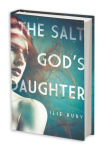

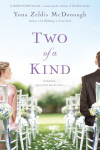




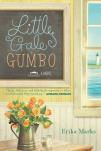
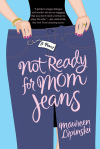



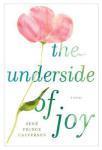



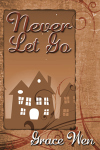
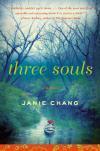


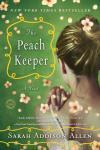

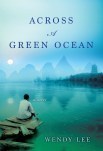
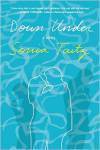
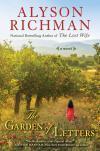
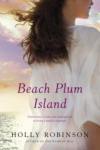
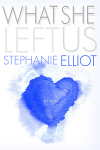
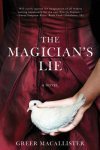



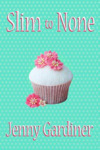
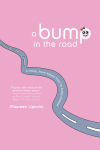

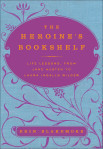
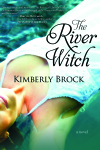



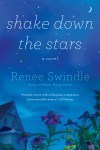




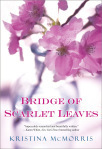






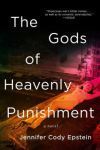
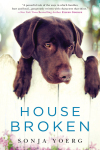
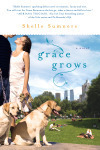
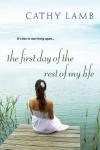
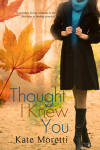

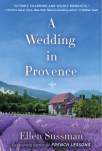

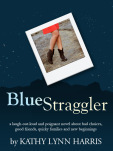



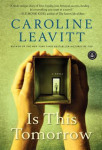

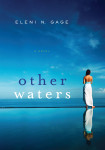

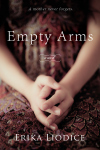
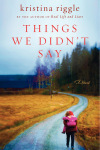





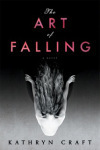

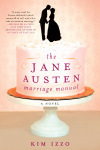
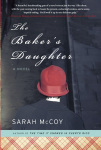


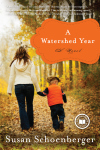

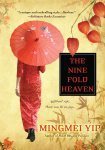
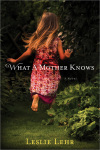

***THIS POST HAS BEEN EDITED BECAUSE THESE ARE NOT GLADIOLAS (as I said they were) BUT GERANIUMS! THANK YOU BETH HAVEY. As evidenced below, I am NO gardener!��
As most of you know, I was able to share the cover of my second novel last week, just a day after my birthday.
The Good Neighbor boasts a beautiful teal door (no, it’s neither gold/white OR blue/black) with an endearing mail slot and blossoms of fuchsia geraniums��poking in from the side. I can just imagine the rest of the scene (of course I can!) — but can’t you? And when you read The Good Neighbor I hope you’ll picture Izzy Lane and her next-door neighbor, Mrs. Feldman, when you see this cover.
I hope you’ll imagine��stepping inside their homes and lives.
What you can’t imagine though, is that until a few days ago, the pub date for The Good Neighbor was not mid-October, but the end of December!
I’d gotten used to the idea of a holiday book launch, except for one thing.
How on earth was I going to have fuchsia geraniums��at my book launch at the end of December? Yes, folks. This is what plagued me. So, not only am I thrilled that now I almost taste my launch date (8 months is NOTHING) I now only have to keep geraniums alive through the fall! If I can write two novels (and I’m working on the third) I can certainly do that. Right? If I can raise two kids into adulthood on my own, as well as four dogs, I can certainly keep plants alive, right?
Don’t count on it.
But I’m going to be determined with the geraniumss. (I’ll keep you posted!) I’m also considering painting my front door teal. And if you know me at all, you know, I’m not kidding.
I guess what I really want to share here is that there is so much about publishing that is out of the author’s control. Like a publication date.
You think that one or two people wave their publishing wands and the decisions are made. It’s more like forty-seven people, their marketing teams, their financial gurus. And their mothers. Not to mention some folks who actually sell books and have opinions. (YAY for them!)
I lucked out with this switch-up. I’m thrilled. Giddy. But had the pub date remained in the midst of holiday season, I’d have made the most of that as well, alas, without gladiolas.
People ask when is the best time to publish a book? Is there a benefit to summer, spring, fall, or winter? Perhaps. Or maybe not. I think the best thing to remember is that we can only control our own writing and then, how we react to and capitalize on EVERYTHING ELSE THROWN OUR WAY.
Including that pub date.
I’m ridding my thoughts of holiday tie-ins (and there’s a big one) and coming up with all the long-lead time publications that might be interested in a story set in Philadelphia. Or about blogging. Or a single mom. Or about lies, as��the consequences of secrets and lies are a big part of The Good Neighbor.
As is hope. And friendship. And love.
Seems to me those could possibly be things people would read about any ol’ time of year. Don’t you think?
But mid-October sounds especially good.
Unless it changes again! ;-)
As things move along with production and promotion for The Good Neighbor I’ll keep you updated.
And yes, it’s just as exciting the second time.
Amy xo
PS I’ve had fuchsia geraniumss on my FB author page for months. I saw the cover ages ago but wasn’t allowed to share. Now I have new FB cover photo. What? You’re not part of my author page? You can fix that by clicking here: OMG I’M GOING TO FIX THAT NOW!��

February 27, 2015
Book Cover Reveal: THE GOOD NEIGHBOR!
Hi everyone!
I’m thrilled to finally be able to share with you (if you haven’t seen it on Facebook or Twitter) the publication date and cover for The Good Neighbor!
The official pub date is October 13, 2015 but you can pre-order now on B&N and Amazon! Right now it’s just the paperback (ah, technology!) so I’ll let you know when the e-book pre-order buttons go live!
Let me know what you think!
Amy xo
(The Glass Wives blurb is a placeholder, folks. I have some wonderful blurbs for The Good Neighbor I’ll share soon!)

February 18, 2015
Author Interview: Author Shelagh Connor Shapiro Says If You Want To Be A Writer, Find Out What Drives You
 There are different kinds of publishers these days, and many ways to find an avenue to have books published if you do the work, persevere, and sometimes, look places you didn’t expect to find a publisher���like right in your own backyard. If you read this blog regularly you know I’m a fan of traditional publishing (in all its forms) and today author Shelagh O’Connor Shapiro shares her journey and success���amidst setbacks and disappointments���with us. I hope her story inspires you to find the path that’s right for you.
There are different kinds of publishers these days, and many ways to find an avenue to have books published if you do the work, persevere, and sometimes, look places you didn’t expect to find a publisher���like right in your own backyard. If you read this blog regularly you know I’m a fan of traditional publishing (in all its forms) and today author Shelagh O’Connor Shapiro shares her journey and success���amidst setbacks and disappointments���with us. I hope her story inspires you to find the path that’s right for you.
Please welcome Shelagh to WFW!
Amy xo
Author Shelagh Connor Shapiro Says If You Want To Be A Writer, Find Out What Drives You
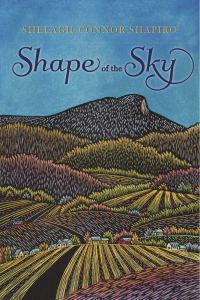 Amy: Can you tell us a little about Shape of the Sky and what sparked the idea for the story?
Amy: Can you tell us a little about Shape of the Sky and what sparked the idea for the story?
Shelagh: In 2004, the band Phish announced that they would be taking a break (possibly breaking up altogether), and that they would play a last weekend in the tiny town of Coventry, Vermont. In reading the event���s news coverage, which started months ahead of time, I learned that a farmer near Coventry had decided not to plant crops that year, because he could make more money renting his land for campground space. To be clear: he had done the math and he would make more money in that one weekend���renting his land to campers���than he would otherwise through the entire planting season. This floored me. I wondered what else this concert might bring to a tiny Vermont village. I began to write about a fictional farming couple who decided to make a similar decision. The town of Resolute, Vermont was born, and a series of interconnected storylines began to spin themselves out from that initial idea. My characters included a high school dropout with extraordinary musical talent; his mother, a paralyzed single mom with a secret; the new state trooper who arrives seemingly out of nowhere; a fan in love with a drummer; a rock star who finds himself short on inspiration and questioning his talent. These characters were so real to me by the end; I found myself feeling indebted to that actual farmer in Coventry.
Amy: In our instant gratification world, sometimes it’s good to remember that books (let’s assume) aren’t written overnight. How long did it take you to write Shape of the Sky? What was the process like for finishing the manuscript and getting it ready for publication?
Shelagh: This question made me smile. I am an exacting writer (to a fault, maybe). I do not outline, I do not free write, and I don���t fly through a first draft. Try as I might to become more efficient, my process is what it is, and I took almost five years to write what I decided was the final draft of Shape of the Sky. Thankfully, my editors agreed that it was in pretty good shape by then, and only asked for a few changes after that point. True, these changes included some painful cutting, but I trusted their instincts and was very happy with the end result.
Amy: Your publisher is Wind Ridge Books of Vermont. When authors today are almost spoiled for choice when it comes to publishing options, would you share why this was the best publisher for you?��And what was your biggest obstacle to getting published?
Shelagh: Spoiled for choice? I have to admit, I didn���t feel that way. But I wasn���t interested in self-publishing. I wanted a press that could lead me through the thickets and help my manuscript become a book. Since publishing Shape of the Sky, I���ve honed my marketing and publicity skills, and so maybe I���d be more confident to self-publish now, if I wanted to bring a book into the world myself. But as I tried to find a home for my novel, I felt anything but spoiled.
The background on this is that Shape of the Sky was my fourth manuscript in nearly twenty years of writing. It then became my first published novel. With my second book, I did find an agent who put me in touch with two big, well-known publishers. They asked to see revisions before offering a contract. So I did extensive revisions, first for one press, then for another, but they both passed in the end. The agent subsequently left the business, putting me back where I���d started. Devastating, yes. So I started another book.
With Shape of the Sky, a number of agents asked for the full, then kept it for a very long time. Two agents had the book for a full year without reading it. During that time, I met Lin Stone of Wind Ridge Books of Vermont. She asked me if I���d like to submit my novel to her. And so I did. She wanted to publish the book, and then I did in fact feel spoiled, because of the way that this wonderful small press treated me���with respect and gratitude for the work.
Perhaps the biggest obstacle in writing the book had to do with the process I mentioned earlier. As I said, I am a slow writer, and my approach to writing has, in the past, involved a good bit of meandering to find my way. (One of my novels took more than five years to write, and I did not want that to happen again!) With Shape of the Sky, I managed to minimize this issue by finding a structure to keep me grounded. Once I had devised the structure I wanted to work within (which I won���t go into, because it���s a bit complicated for this post, but suffice to say I worked with a musical construct called the ���Circle of Fifths���), the book moved forward much more quickly. Writing into structure kept me focused and also resolved certain creative decisions that could otherwise have become impasses. I will never again work without a structure that keeps me focused, excited and shielded from my own impetuousness!
Amy: What’s your best advice for aspiring authors in today’s publishing climate?
Shelagh: If you love writing, and if you are able to write, do it. If you want to ���be a writer,��� first decide what is driving you. Money? Fortune? Fame? Admiration? All great motivators, but pointless if writing does not bring you joy or some sense of discovery and purpose. If, however, writing is how you make sense of the world, and you���ll be doing it with or without a book contract, then don���t lose faith if your ideal publishing experience eludes you. For the most part, unless you���re incredibly lucky, only perseverance and hard work allows you to succeed as a writer. Think of the journey as a kind of koan, a ���paradox to be meditated upon ��� used to train Zen Buddhist monks to abandon ultimate dependence on reason and to force them into gaining sudden intuitive enlightenment.��� (www.merriam-webster.com) If you embrace the paradox, and focus on your writing, you���ll survive.
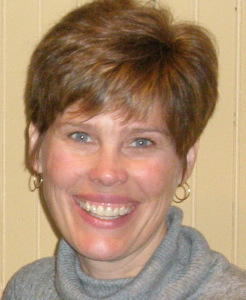 Shelagh Connor Shapiro’s novel, Shape of the Sky, was published by Wind Ridge Books of Vermont in September 2014. Her stories have appeared in North Dakota Quarterly, The Baltimore Review, Short Story, Gulf Stream and others. Her story ���somewhere never gladly��� was nominated in 2014 for a Pushcart Prize, having been included in Please Do Not Remove, a collection of stories and poems inspired by old Vermont library cards. She has an MFA in Writing from the Vermont College of Fine Arts and is a contributing editor for the Vermont literary journal Hunger Mountain. Her radio show, Write the Book, which features interviews with authors, poets, illustrators, agents, and editors, is heard weekly on 105.9 FM “The Radiator;” archived podcasts can be found on iTunes and at writethebook.podbean.com Shelagh lives in South Burlington, Vermont with her husband, Jerry. Sons Bennett, Connor, and Aaron are all grown up and scattered about the country, but luckily they still come around from time to time.
Shelagh Connor Shapiro’s novel, Shape of the Sky, was published by Wind Ridge Books of Vermont in September 2014. Her stories have appeared in North Dakota Quarterly, The Baltimore Review, Short Story, Gulf Stream and others. Her story ���somewhere never gladly��� was nominated in 2014 for a Pushcart Prize, having been included in Please Do Not Remove, a collection of stories and poems inspired by old Vermont library cards. She has an MFA in Writing from the Vermont College of Fine Arts and is a contributing editor for the Vermont literary journal Hunger Mountain. Her radio show, Write the Book, which features interviews with authors, poets, illustrators, agents, and editors, is heard weekly on 105.9 FM “The Radiator;” archived podcasts can be found on iTunes and at writethebook.podbean.com Shelagh lives in South Burlington, Vermont with her husband, Jerry. Sons Bennett, Connor, and Aaron are all grown up and scattered about the country, but luckily they still come around from time to time.
Author, Shape of the Sky
Host, Write the Book Radio Show & Podcast
Website: shelaughswithoutus.com

February 11, 2015
Author Interview: Susan Meissner Says: Reading Good Fiction Really Does Prepare You To Write Good Fiction
 It’s not often we get insights and advice from an author who has published seventeen books! Well, here’s our chance! ��Susan shares with us her thoughts about publishing today, writing with some structure, and how reading good books leads to really good writing!
It’s not often we get insights and advice from an author who has published seventeen books! Well, here’s our chance! ��Susan shares with us her thoughts about publishing today, writing with some structure, and how reading good books leads to really good writing!
Please welcome Susan Meissner back to WFW!
Amy xo
Author Susan Meissner Says: “Reading Good Fiction Really Does Prepare You To Write Good Fiction”
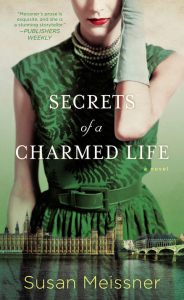 Amy: Susan, you’re the author of seventeen novels, with more on the way. That’s such an accomplishment. Can you tell us a few of the changes you’ve seen (and felt) in the industry since you began as a novelist?
Amy: Susan, you’re the author of seventeen novels, with more on the way. That’s such an accomplishment. Can you tell us a few of the changes you’ve seen (and felt) in the industry since you began as a novelist?
Susan: Maybe every ten years we say this, but it sure seems like the last decade has shown us tremendous change in the book industry. Ten years ago e-books were the stuff of futuristic movies, nobody who self-published got any respect and we still had Borders bookstores in every major city. Now e-books are just as popular as paper, indie-published books can actually look good and win awards, and Borders is sadly history. The Big 6 publishers are now the Big 5. Everyone is wondering what���s going to happen to books in the years ahead. I really don���t know. If I was a publisher or an agent, not knowing might keep me up at night, but since I am a storyteller and there will always be a need for stories, I am okay with whatever the future holds. There have always been stories. The medium and the delivery may change in the years to come but the hunger for stories will, I think, endure.
Amy:��How do you think your writing and stories have changed over the years?
Susan: When I started out ten years ago writing for the inspirational market, I was trying to find my place in the big world of published novels. I wasn���t sure where I fit or what kind of voice I had. I was a Christian who wrote fiction, so I started out writing Christian fiction thinking that���s where I belonged. But I found that what I was really writing was fiction that fit my worldview, which happened to be Christian. I knew I was more like a baker who is a Christian and who wants to bake amazing bread that people can���t stop talking about rather than a baker who bakes Christian bread. My writing has, I hope, matured over the years, and I would also like to think that my stories reflect an upward tick in quality and depth, but I think the core of my writing has stayed the same. I still want to write stories about the virtues of love, friendship, sacrifice, forgiveness, and acceptance that I wrote in the beginning of my career. I just happen to write those stories now for the general market. I am a baker on Main Street, if you will, and I bake bread that I hope will appeal to the general appetite.
Amy: Obviously, you have this “writing thing” down pat. Do you outline your stories? Write as it comes to you? Do you use any��special tools you use (post-it notes and index cards come to mind for me)?
Susan: Ha! The only pat in writing is the one you employ to wake up your fanny when you���ve been sitting on it writing too long! I do outline my stories, but loosely so. I use my version of the 3-act structure with lots of room for discovery while I write. I plan for the big plot pivots, the twists, the internal goal and external goal, the darkest moment and the climax, but I leave lots of wiggle room in how I get to those places. The plot of any novel I write evolves and morphs as I go but I still want to be to be able to look at the evolving story and see that I do in fact, have plot pivots and twists and a dark moment and internal and external goals, even if they change as I write.
Amy: Do you adhere to a strict writing schedule or word count goals?
Susan: I research first and then write. And since I write novels with a blend of historical and contemporary story threads, there is a lot of research up front. I call the research part stocking my grocery store. When I transition into writing mode, I plot the story using my own version of the 3-act structure, and then I finally start writing it, shopping from my grocery store as I write.�� I shoot for 2,000 words a day 4 to 5 days a week. I try NOT to content edit as I go. Just minor edits. Like, I will read the 2,000 words I wrote yesterday, fix them, and then move on to the 2,000 words I will write today.
Amy: Who are some of your favorite characters you’ve written?
Susan: Hard, hard question! They all feel like friends after I���ve just put them through the worst thing that is likely to ever happen to them. Lauren from The Shape of Mercy still feels like she is in my skin. And so does Caroline from A Sound Among the Trees. And the book that just released? All of those characters in Secrets of a Charmed Life feel like they are still houseguests, especially Charlotte and also Emmy���s mother.
Amy: What sticks out in your mind as one of the most difficult scenes you’ve written?
Susan: When I had to write the chapters on Taryn watching the Twin Towers fall on 9-11 in A Fall of Marigolds, those were probably the most emotionally exhausting words I have ever written. I had to research that terrible day to be able to write about it as though I had physically been there, which meant reading the firsthand accounts and practically reliving every terrorizing moment. Then I had to mentally step into the mind of someone whose husband perished in that attack. It was brutal. And yet necessary for the story.
Amy:��What’s your best advice for aspiring authors of women’s fiction?
Susan: Read, read, read! Read the people who are writing the best in women���s fiction these days. Don���t read to copy anyone���s style, read to find out which writers resonate with you. And then see if you can figure out why. If they are writing the kind of books that you want to write, then you need to figure out what makes them stand out to you. Is it their attention to detail or character motivation or secondary characters or story construction or voice or pace or mood? Reading good fiction really does prepare you to write good fiction. That said, don���t read swill. Not even for the lame excuse that it���s just for entertainment. If you aspire to write women���s fiction you don���t need any empty calories messing with your mojo. Just read the good stuff. There will be time later, if you really want it, to read empty fiction. But I doubt you will want ordinary once you���re hooked on exceptional.
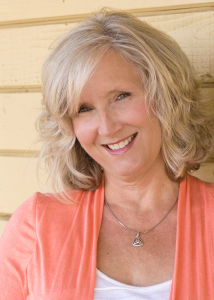 Susan Meissner is a multi-published author, speaker and writing workshop leader with a background in community journalism. Her novels include A Fall of Marigolds, named by BookList���s Top Ten women���s fiction titles for 2014, and The Shape of Mercy, named by Publishers Weekly as one of the 100 Best Novels of 2008. A California native, she attended Point Loma Nazarene University. Susan is a pastor���s wife and a mother of four young adults. When she���s not working on a novel, Susan writes small group curriculum for her San Diego church. Visit Susan at her website: http://www.susanmeissner.com on Twitter at @SusanMeissner or at http://www.facebook.com/susan.meissner
Susan Meissner is a multi-published author, speaker and writing workshop leader with a background in community journalism. Her novels include A Fall of Marigolds, named by BookList���s Top Ten women���s fiction titles for 2014, and The Shape of Mercy, named by Publishers Weekly as one of the 100 Best Novels of 2008. A California native, she attended Point Loma Nazarene University. Susan is a pastor���s wife and a mother of four young adults. When she���s not working on a novel, Susan writes small group curriculum for her San Diego church. Visit Susan at her website: http://www.susanmeissner.com on Twitter at @SusanMeissner or at http://www.facebook.com/susan.meissner

February 4, 2015
Guest Post: Author Kellie Coates Gilbert Shares Her Pulpwood Queen Weekend With Women’s Fiction Writers
Today we have a special treat! Step into the world of the��Annual Pulpwood Queens��� Girlfriend Weekend��with author Kellie Coates Gilbert! It’s an event filled with authors and readers. Have you been there as either? Share your experience in the comments. Look fun to you? Let us know what you think!��
And please welcome Kellie Coates Gilbert back to Women’s Fiction Writers!
Amy xo
Click to view slideshow.
Author Kellie Coates Gilbert Goes Around The World With Books���In Texas!
 A few weeks ago, I attended the 15th Annual Pulpwood Queens��� Girlfriend Weekend in Nacogdoches, Texas. This was my fourth time to attend, and I���ve had a ball each time. The weekend���a place for book club members to meet and mingle with their favorite authors���is truly larger than life FUN!
A few weeks ago, I attended the 15th Annual Pulpwood Queens��� Girlfriend Weekend in Nacogdoches, Texas. This was my fourth time to attend, and I���ve had a ball each time. The weekend���a place for book club members to meet and mingle with their favorite authors���is truly larger than life FUN!
For those who don���t know, it starts with a Thursday night gathering where the authors serve plates of down-home Texas BBQ to the book club members who���ve just pulled into town, wearing hot pink, animal print and tiaras on their heads.
This year, the theme was AROUND THE WORLD WITH BOOKS and the waiters (also known as authors) dressed as flight attendants, astronauts and pilots.
All day Friday and Saturday, authors sit on panels where they answer questions that Head Queen Kathy L. Murphy and her co-host Jamie Ford, author of the New York Times Bestselling book Hotel on the Corner of Bitter and Sweet. Readers get a chance to learn what inspired the stories, how authors came up with their characters and what stories still burn to be told, among other things.
I introduced WHERE RIVERS PART, a story about a food scientist who finds her career dreams shattered when a foodborne illness breaks out under her watch. As she unravels a corporate conspiracy, she discovers her ambition came at a very high price. ��(I���m in the blue jacket in one of the photos above).
When the author panels conclude each day, the real fun begins! On Friday night, we had a block party on the streets of the historic downtown in Nacagdoches. Store owners decorated and held specials for attendees. There was a photo booth and music and lots of fun.
Saturday night is the pinnacle event . . . the great HAIR BALL where the book clubs decorate their tables and wear themed costumes. Authors too.
Fun. Books. Laughter. Costumes. Readers and authors. That in itself would be enough for a memorable weekend, but even more important is that ALL of this is done to promote literacy. The proceeds from a silent auction (items furnished by authors) go to the local Dolly Parton Imagination Library project.
Thank you Kathy L. Murphy and the Pulpwood Queens! I can���t wait for next year!
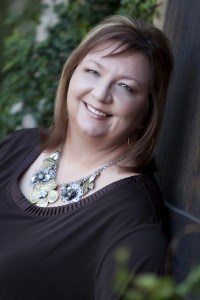 A former legal investigator and trial paralegal, Kellie Coates Gilbert writes with a sympathetic, intimate knowledge of how people react under pressure.�� Her stories are about messy lives, and eternal hope.
A former legal investigator and trial paralegal, Kellie Coates Gilbert writes with a sympathetic, intimate knowledge of how people react under pressure.�� Her stories are about messy lives, and eternal hope.
For more information, visit��http://www.kelliecoatesgilbert.com

Women's Fiction Writers
- Amy Sue Nathan's profile
- 543 followers




